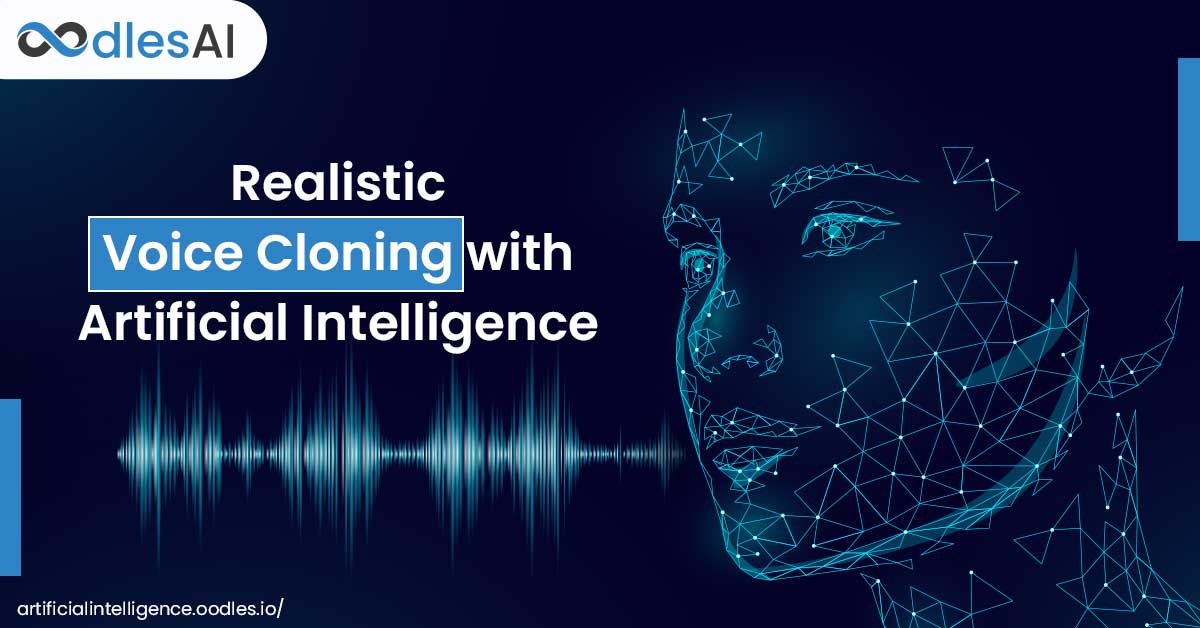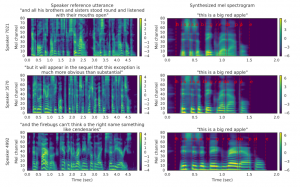Copy That: Realistic Voice Cloning with Artificial Intelligence
Sanam Malhotra | 18th May 2020

In a bid to sound more like humans, artificial intelligence (AI) is all set to break new records, literally. A new technology, called ‘Voice Cloning’ is replacing the robotic tonality of virtual assistants with natural human voices. Voice cloning with artificial intelligence can master unique human voices to make chatbots, video clips, and other interactions more intuitive and engaging.
In this article, we take a closer look at how deep learning and AI development services power voice cloning to build effective business solutions.
The Science Behind Voice Cloning with Artificial Intelligence
AI’s underlying technologies, machine learning and deep learning have constantly demonstrated significant potential for text-to-speech (TTS) interactions, also called speech synthesis. The technology when coupled with speech recognition becomes the backbone for virtual assistants such as Siri, Alexa, and the likes. However, providers of chatbot development services still struggle at eliminating the robotic tonality associated with voice-controlled assistants.
With voice cloning, deep neural networks are moving a step closer to quality, interactive, personalized, and highly intuitive human-chatbot interactions.
A recent research paper, Transfer Learning from Speaker Verification to Multispeaker Text-To-Speech Synthesis by Jia, Zhang, and others introduce an arguably earlier and more efficient way for voice cloning. The paper proposes a new technique, Speech Vector to TTS (SV2TTS) that generates near-similar speech audio using only a few seconds of a sample voice. Unlike highly expensive traditional training methods that required several hours of professionally recorded speech, SV2TTS can-
a) Clone voices without excessive training or retraining
b) Produce high-quality audio results, and
c) Synthesize natural speech from speakers unseen during the training.

As visualized in the above model overview, the SV2TTS system comprises of three independently trained components, including-
1) Speaker Encoder Network
In the first stage, the speaker encoder takes an audio sample fro a single speaker as input to derive an embedding. Representing the speaker’s voice, the embedding captures the unique characteristics such as high/low pitched voice, tone, and accent with high similarity using only a short audio file.
2) Synthesizer
Synthesizer constitutes the second phase of the SV2TTS model that involves text analysis to create mel spectrograms, wherein the sound frequencies are converted into mel scale. The synthesizer combines the smallest units of human sounds, called phonemes with the embeddings to me spectrogram frames.

Here’s how the synthesizer works with inputs in different voices using the SV2TTS model.
3) Neural Vocoder
Until the final phase, the system has only produced a mel spectrogram but no audio output to test. Therefore, the proposed model employs neural vocoder to convert the mel spectrogram into raw audio waves.
The foundations of this model are laid in transfer learning, wherein the training phases of each component are separated to minimize training data requirements. The system not only eliminates the need for speaker identity labels but also discards high-quality clean speech for training purposes.
Now that we are thorough with the workings of voice cloning with artificial intelligence, let’s explore some business use cases of the model.
Enterprise Applications of Voice Cloning with Artificial Intelligence
1) Online Learning Courses
In the wake of continuing nation-wide lockdown to contain the COVID-19 outbreak, online learning is gaining steam among students. The new normal is increasingly propelling demand for high-quality intuitive digital content complemented by audio notes or ebooks to assist students.
Providers of virtual classes and informative video content can significantly benefit from voice cloning to produce interactive content with minimum operational costs.
Voice cloning with artificial intelligence can ease the burden of recording audio notes for every new session or retaking due to mistakes. It can significantly transform the way teachers impart knowledge to students in the form of professionally recorded lectures, complex topics, and other educational materials.
Also read- Restoring the World Economy with AI and Machine Learning Post COVID-19
2) Virtual Assistants
Another business use case of ai-powered voice cloning is emerging in the form of interactive virtual assistants. The technology opens new opportunities for a range of businesses like education, healthcare, eCommerce, and other to
a) Personalize voice-controlled interactions to enhance customer experience
b) Add a familiar voice to healthcare services for comforting the patients
c) Boost customer engagement with audible product descriptions
d) Deliver a professional new reading speech, and much more.
Also read- Building Healthcare Chatbots for COVID-19 Awareness and Diagnosis
Experience Voice Cloning with Artificial Intelligence at Oodles
We, at Oodles AI, are constantly working with emerging technologies to build effective enterprise-grade AI solutions. With experiential knowledge in deploying machine learning-based chatbots and virtual assistants, our team is now exploring the applications of voice cloning.
Our ability to deploy efficient speech recognition and speech synthesis models using natural language processing algorithms expands our capabilities to build-
a) AI-powered voice cloning models for online learning platforms
b) Standardized voice-controlled interactions through healthcare chatbots
c) Sophisticated audio for ebooks, articles, and more.
Connect with our AI team to know more about our artificial intelligence services.



